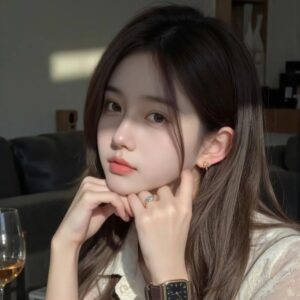International Faces of AI Beauty: A Visual Journey
Embark on a visual journey exploring the diverse world of AI beauty, where technology and culture intertwine to redefine beauty standards globally.
Delve into the impact of AI on beauty perceptions and discover how this innovative technology is reshaping the beauty industry as we know it.
.
 As we conclude this captivating discussion on International Faces of AI Beauty: A Visual Journey, we reflect on the transformative power of AI in shaping beauty ideals and representations across cultures.
As we conclude this captivating discussion on International Faces of AI Beauty: A Visual Journey, we reflect on the transformative power of AI in shaping beauty ideals and representations across cultures.
Overview of International Faces of AI Beauty
AI beauty refers to the use of artificial intelligence technologies in the beauty industry to enhance and transform various aspects of beauty products, services, and standards. The significance of AI in the beauty industry lies in its ability to revolutionize how beauty products are developed, marketed, and customized for individual consumers. By utilizing AI algorithms and machine learning, companies can analyze vast amounts of data to understand consumer preferences, create personalized products, and improve overall customer experience.Transforming Beauty Standards Globally
AI is transforming beauty standards globally by challenging traditional notions of beauty and promoting inclusivity. Through AI-powered tools like virtual try-on apps and personalized beauty recommendations, individuals can explore diverse beauty looks and find products that cater to their unique features and preferences.Cultural Influences on AI Beauty
Beauty standards vary significantly across different cultures, with each society having its unique ideals and perceptions of beauty. These cultural influences play a crucial role in shaping the development and adaptation of AI beauty technologies.Diverse Perception of Beauty
Various cultures value different features and characteristics when defining beauty. For example, while some societies prioritize fair skin and delicate facial features, others may celebrate fuller figures and darker skin tones.- AI beauty tools like virtual makeup apps and facial recognition software are designed to cater to these diverse preferences. For instance, they offer a range of customization options to enhance or modify features based on cultural beauty norms.
- By incorporating data and insights from different cultural aesthetics, AI technologies can provide personalized beauty recommendations that align with individual preferences and societal standards.
Visual Representation of AI Beauty
AI technology has revolutionized the way beauty is represented visually, offering a plethora of tools and techniques to enhance and manipulate images in unprecedented ways. From smoothing skin textures to altering facial features, AI has played a significant role in shaping the beauty standards we see in media and advertising today.AI Enhancement of Beauty
AI is used to enhance visual representations of beauty by providing advanced image editing capabilities that go beyond traditional methods. Through algorithms and deep learning techniques, AI can automatically retouch photos, adjust lighting, and even create entirely new looks that cater to specific beauty idealsRole of AI in Creating Realistic Beauty Standards
AI has a major role in creating realistic beauty standards by allowing for more diverse representations of beauty. Instead of promoting unattainable and airbrushed images, AI can generate realistic enhancements that celebrate uniqueness and individuality, promoting a more inclusive definition of beauty.Impact of AI-generated Beauty Content
The rise of AI-generated beauty content on social media and advertising has had a profound impact on how beauty is perceived and consumed. With the ability to create flawless and idealized images, AI has influenced consumer expectations and behaviors, leading to a shift in beauty standards and trends in the digital age.Ethical Considerations in AI Beauty
As AI technology continues to shape the beauty industry, it is crucial to consider the ethical implications that come with using AI in defining beauty standards. This involves examining issues related to diversity, inclusivity, and representation, as well as addressing the challenges posed by algorithmic biases.Diversity and Inclusivity in AI Beauty
Ensuring diversity and inclusivity in AI beauty standards is essential to avoid perpetuating narrow beauty ideals that exclude certain groups. By training AI algorithms with diverse data sets that represent a wide range of skin tones, facial features, and cultural backgrounds, we can work towards more inclusive beauty standards.Algorithmic Biases in Beauty Standards
Algorithmic biases can inadvertently reinforce existing beauty stereotypes and prejudices, leading to exclusion and discrimination. It is vital to regularly audit AI algorithms to identify and rectify any biases that may skew beauty standards. This requires transparency in the data used to train AI models and continuous monitoring to ensure fairness and accuracy.Final Review
 As we conclude this captivating discussion on International Faces of AI Beauty: A Visual Journey, we reflect on the transformative power of AI in shaping beauty ideals and representations across cultures.
As we conclude this captivating discussion on International Faces of AI Beauty: A Visual Journey, we reflect on the transformative power of AI in shaping beauty ideals and representations across cultures.




